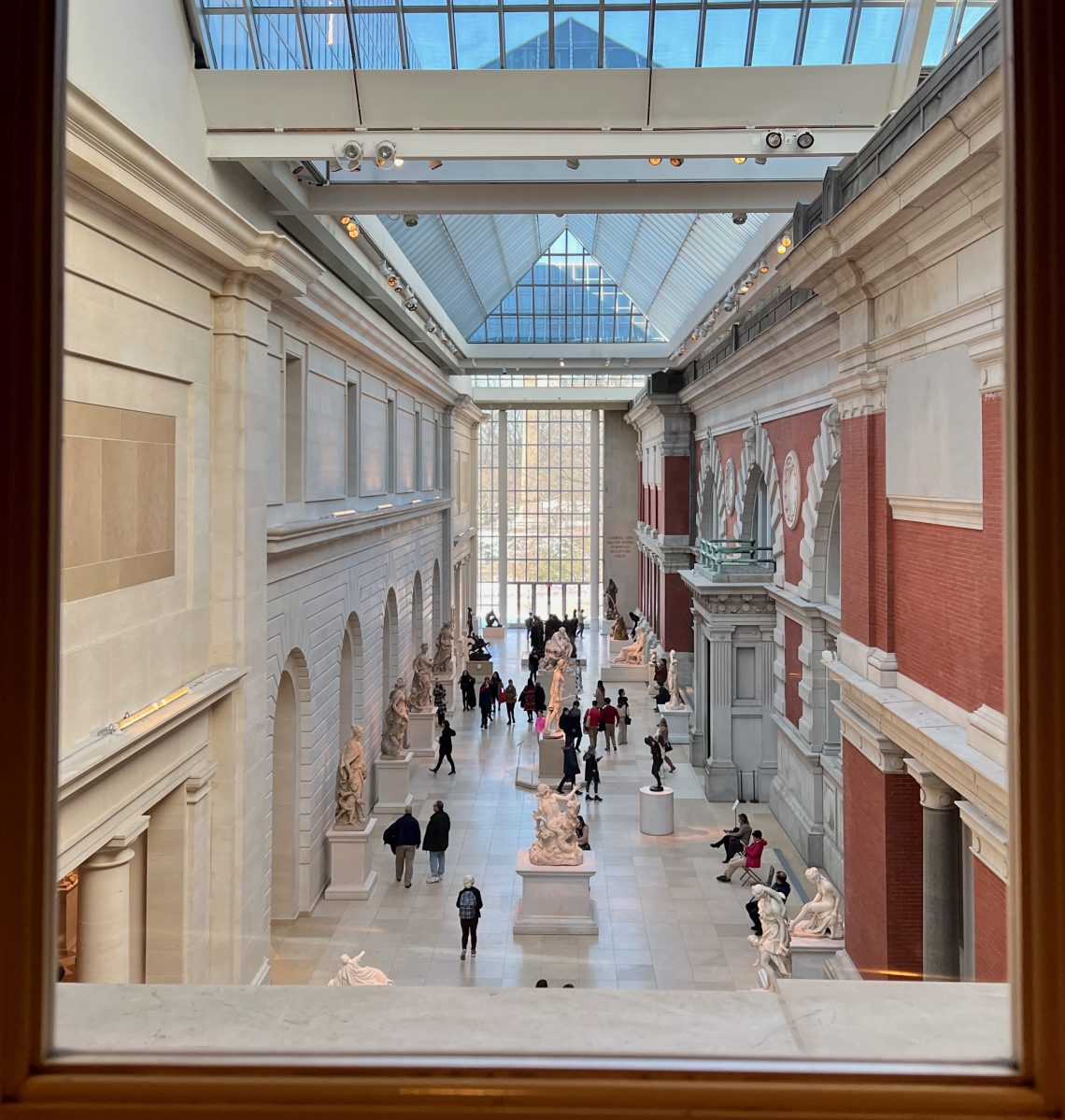
Cultural Continuity
The other day at the MET we stepped into the exhibition of Africa & Byzantium. Art and household items were shown from regions around the Mediterranean Sea. We were greeted with a map that showed the size of the Byzantium empire lasting from the fourth to the fifteenth century. Another map tracked changes in political influence, from the earlier Roman Empire, to the Byzantium empire and at last the Ottoman Empire.
My interest was piqued. I am currently reading, okay I listen to the audio book, House of Stone by Anthony Shadid, the late Lebanese American correspondent from Oklahoma. In his memoir of home, family and the lost middle east, he describes his return to the house his grandfather built in Lebanon. I’m fascinated by the rich history of his country which, as he describes it, had seen great prosperity under the Ottoman empire. That period ended during WWI.
In the midst of a crowd squeezing past displays of jewelry, tapestry, and Nubian boxes, I became disoriented and quickly lost focus. I couldn’t connect to the art that had been put on display to represent this ancient time. Fortunately, the exhibition comes with an audio guide. But when I wanted to put in my new noise cancelling Earbuds (an early birthday gift from my husband) I couldn’t find them. I just had them in my hands and now they were gone. After I had cycled through my purse and the empty pockets of my jacket, twice, my husband advised me to ping my Earbuds. Great, I thought, but then wondered whether some stranger might find them because of the ping.
I decided it best to leave the cramped exhibition and rushed past people streaming inside, past the maps of the Byzantium empire. I was heading towards a bench in a hall where we had sat for a moment to decide what to see next. That’s where I had pulled out my EarPods. The crowd dispersed into the wide-open space of the hall lit by daylight. On the bench sat a family, resting, planning their next move. I decided to ping my Earbuds and was relieved to hear them chime in response. They were close. I stepped around the bench to look underneath. The family asked what we were looking for and got up to check their seats. Nothing.
The chime I played again and again echoed in the hall. But no matter which way I turned I couldn’t locate its source. Unable to determine where the sound was coming from, I walked away from the bench to see if the volume would change. Now it sounded further away from me, further ahead. I felt like chasing a ping that was always a step ahead of me. That didn’t make sense. I turned to my husband. He had heard it too. The chime, he said, walked away with you. Check your pockets again.
The family had left and I returned to the bench to empty my purse. I put my coat down and that’s when I heard something hard hitting the marbled surface. I lifted my coat again and felt a weight pulling on one side. Something was inside my coat. I felt for that weight and found a hard item, shaped like a pebble. Wondering how it might have gotten inside the lining, I turned the coat inside out. And there were my earplugs, in the inside pocket. Relieved, I scolded myself. I knew better than to change the places where I usually put my things. At least you put it someplace safe, my husband said. To which I responded, I put it away so I won’t lose it but, in a place, where I can’t find it.
That’s what we should use AI for, my husband said. No matter where we file our information, AI would be able to find it. I pictured AI finding a needle in the hay stack. Like a note I’ve written but forgot where I saved it. No need to sort and organize any more, AI would pick it out from any place. But that’s not quite true. In order to find anything, it needs to be labeled first. For the task of finding, we need to know what we are looking for. And having an item in our hands without a clue to its meaning or function is of no use to us. We need more than AI to make sense of the world we live in.
With our Earbuds plugged in, we returned to the exhibition. We searched for the items that were singled out for the audio guide. We listened to stories that gave us context which in turn allowed us to connect to the people living during the Byzantium empire. Four ampullae of Saint Menas told the story of a man who died for his Christian faith. Flasks with his image are ubiquitous in the Coptic orthodox communities to this day.
Even when the use of woven tapestry changed from curtains hanging in wealthy households to wrapping bodies for their funeral, even as politics or religions change, artistic traditions maintain cultural continuity over time. I left the exhibition feeling that art will sustain our lives through upheaval and turbulent times. Even through the rise and fall of empires.
I returned home to listen to the story of the House of Stone. I have a better idea now how the House had changed over time. How Anthony Shadid, searching for the remains of his family’s past, reconnects to a culture that has survived over time.
